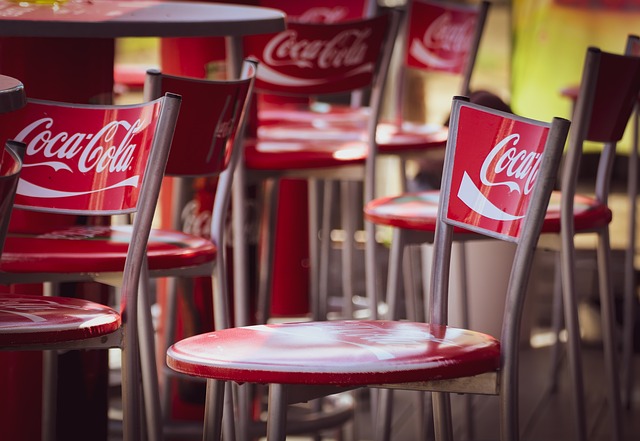What’s in a name, and how much does the name of a business matter? A lot, when you’re talking about business name ideas that spell success, first impression, and ultimately, a lasting reputation.
So when you are a newcomer and don’t have a discernible identity to introduce to others, how do you determine your brand name? How long does it take for you to come up with a name? What kind of research was made, and what’re the criteria for choosing such an identity?
In the Philippines, a commonly observed business name has something to do with names such as initials (“MML Pawnshop”), first names (“Eddie’s Shoe Repair Shop”), or surnames (“De Guzman Eatery”).
Whether they are decided in haste (“we need your business name po for free Coca-Cola signage for your sari-sari store”) or not (hiring a branding agency to spend a month or more to suggest a name), getting the business name ideas right (or funny) could be a start of a profitable venture.
But for the clueless or who cannot come up with a better way of deciding how to identify a business-related name, here are some suggestions.
Table of Contents
Common ways brands are named
Before you may come up with a name of your own business, let’s observe the typical characteristics of how brands have been named.
Acronyms
Famous brands, like those name initials we often find in Filipino sari-sari store signages, also use acronyms. BBC (British Broadcasting Corporation), DKNY (Donna Karan New York), JBL (James Bullough Lansing), and ESPN (Entertainment and Sports Programming Network) are just a few of them.
Word combinations
Combine two words that closely associate with your brand, and you can construct a suitable name. Groupon, Facebook, FourSquare, TurboTax, Snapchat, PayPal, and DreamWorks are some of the big brands that take names out of a mashup of two different words.
Places
Geography can also be a part associated with the brand, so they get picked and chosen. Amazon, as an exotic and biggest river in the world. Patagonia, which is also a mountain range in South America, relates to climbers and surfers. New York Life is an insurance brand tied to the state that birthed it. Nokia refers to a paper mill near the Nokianvirta River in Finland, and Cisco takes its name from San Francisco, California.
Mythology characters
Roman and Greek legends are symbols of power and majesty, so they are naturally attractive as brand names. Nike, the goddess of victory, Milo was derived from the Greek character Milos who was known for his strength, and ASUS from the mythical winged horse Pegasus. Apollo gave Pandora the gift of music.
Founder names
There are plenty of brands that are named after people. A&M Records (Herb Alpert and Jerry Moss), Adidas (Adi Dassler), Martha Stewart, Ralph Lauren, Dell (Michael Dell), Harley-Davidson (William Harley and Arthur Davidson), Honda (Soichiro Honda), and Miele (Carl Miele) are some of the notable examples.
Law firms and consulting agencies have often been using the names of partners to compose the brand name. SGV (SyCip Gorres Velayo & Co.), Chan Robles & Associates, Nicolas & De Vega are some examples of companies in the Philippines made up of multiple names. If you want international names to join this list, you got Bang & Olufsen, Abercrombie & Fitch, Briggs & Stratton, and Procter & Gamble.
Descriptive terms
These are brands that readily convey the products or services they offer. Unlike brands such as Apple or Caterpillar that have little to nothing to do with their portfolio, these are brands that give you an idea of what they do. Examples include YouSendIt, TripAdvisor, Pizza Hut, Toys R Us, and Hotels.com.
Coined and invented terms
If it’s too difficult to create a brand name, why not create one out of nothing? Talk about Xerox, Verizon, and Kodak, which had little to no meaning but caught on and still became widely popular.

Tips on picking a name for your business
- The brand name needs to sound good. When reading aloud, it is enunciated clearly and has no bad translation in another language or evokes a different meaning when misheard. Typically they consist of a few syllables and may use alliteration to make it memorable. Think American Apparel, Krispy Kreme, Best Buy, and Coca-Cola.
- Avoid fancy Web 2.0 naming scheme. As domain names ran out in the earlier part of the new millennium, companies had to be creative in naming their brands. They are dropping a letter (Flickr, Tumblr, Grindr, Scribd), adopting a popular suffix (Visual.ly, Respond.ly, Weebly, and Optimizely) or using cyber-, net- prefixes and .com suffix that were built from a bandwagon defined in an era and with no perceived long term vision. This naming trend has been resurrected with the latest so-called transformative companies. Now companies have started naming themselves bit-, crypto-, -coin, and -chain in a period where cryptocurrencies and blockchain are in.
- Make sure you can trademark your selected name. Whether you are planning to build a small brand or something, you’ll eventually sell to a corporation; the ability to trademark a brand name is an important consideration. Likewise, check out uspto.gov — or a new site called Trademarkia.com — before settling on a name.
- Consider using foreign words. If your desired name is not available, it won’t hurt to get the same meaning from another language. Altavista (Spanish for “high view”) or Daewoo (“great house” in Korean) are prime examples. Note that if you’re planning to operate in several countries, a trademark may already be made, so you need to use a different brand name across these markets.
Moving forward, take the definitive steps once you are ready to adopt a new brand name or replace an existing one.
- Go back to the basics
When drafting the name of your brand, many aspects are in play. The nature of your business, mission statement, unique selling proposition, your target audience, and even your competitors are some of them. They sound abstract but to get things going you may ask the following question when starting to suggest names:* What message do you want to portray through your business name?
* How would you describe your business name? Easy to remember, easy to pronounce, service- or product-driven?
* What do you want the public will perceive at the mention of your business name?
* What are the names of your competition? What’s good and bad about their names?
* If you are replacing an existing brand name, what is your main motivation? The purpose of this step is to define a guideline that will help align name suggestions in place. - Conduct a brainstorming session to suggest names
Once a guideline on choosing brand names has been named, it’s time to wear your creative hat and be a free thinker so you’ll generate more ideas and possibilities for you or the team to choose from. Keep in mind the outlined guidelines during the brainstorming session, which may include mind maps, brain dumping, list creation, and word associations. If brainstorming is new to you, here’s a helpful guide on how to get started. - Take time to decide
Once you have come up with ideas on branding names, it takes time to review and analyze your suggestions. Go through the list and compare them with each other, poring over your guidelines and check which ones resonate best. This step may not be over in a single session as you need to let your preconceptions and biases settle first before eliminating the non-contenders from the list. You may need to step out of the office, catch fresh air outside, go to a coffee shop, or sleep on it. Such a task of selecting your brand/business name is not supposed to be a quick exercise. Your eventual choice will be with you for a long time, and is associated with the brand name that’s feeble or contentious could haunt your business.Let your ideas brew for a couple of days and go back to the drawing board to review your list. You may suggest more names or take others off the list. Or you may be quite certain which suggestion fits the bill and will become your choice. If none works after a few sessions, restart your brainstorming process. - Check availability and eligibility of name
Before you officially decide on which brand name to pick, make sure this one is not already trademarked. The uspto.gov website suggested above falls under this step that allows you to check government databases for potential matches. In the Philippines, you can do so using the Securities and Exchange Commission Company Registration System. Do a parallel search on Google and Twitter to check whether such names exist as a business entity or at least being mentioned in social media circles. The availability of your proposed brand name should include domain name search and social media handles. In case they are taken, be prepared with suggested alternatives.
Conclusion
Deciding on your company name may be through your gut feeling and done in an instant. But it can also take a team of professional naming experts to devote anywhere between six weeks to six months to select a name. That’s how profound a brand naming exercise to some people is.
You probably won’t have that much time, but plan to spend at least a few days making a selection. Once you made up your mind, start building that enthusiasm for the new name. Your brand name is your first step toward building a strong company identity, and one that accompanies you long as you’re in business.
Read More:
- List of Globe, Smart, Other Network Mobile Number Prefixes
- How to Register Foreign Business in the Philippines
- Why People Who Owe You Money Get Mad When Asked to Pay Back
- Withholding Tax Table for Filipino Taxpayers
- 5 Things Every SSS Member Needs to Know
Help Pinoy Negosyo
If you find this article helpful, consider donating to Pinoy Negosyo to help maintain content and server expenses. Thank you!









